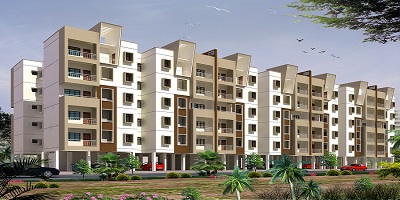While world’s urban population is expected to surpass six billion by 2045, it is estimated that by 2030, 40% of India’s population will be living in urban areas and contributing 75% of GDP. As per syndicated reports, at present, there’s a shortage of 18 million homes across the country of which 15 million are needed for low-income families. The present government has taken a step in the right direction to meet the demands by introducing various policy initiatives towards affordable housing.

‘Housing for all by 2022’ has been a significant focus area for the government since 2014. The move to grant infrastructure status for affordable housing will act as a catalyst in the successful implementation of this vision. This vital segment will now see cheaper sources of finance – including external commercial borrowings (ECBs). Re-financing of housing loans by National Housing Banks (NHBs) can give a further boost to the sector.
The affordable housing sector is expected to attract more private players to the ground, stiffening the competition in the market. The entry of private players and increased participation from buyers and investors will keep up the supply factor in the segment. Moreover, the carpet area of 30-60 square meters being applicable as against built-up area of 30-60 square meters will certainly attract more demand, propelling the growth of the sector. The subvention scheme offered on housing loans for this segment will result in lower borrowing costs and the income tax exemption offered to these projects up to five years has stimulated demand in the sector. The revised interest subsidy provided to the first time buyers of the middle-income group will increase the number of people eligible for receiving credit linked subsidies pushing the demand for homes in this segment.
The increase in time-frame for completing the projects from three to five years indicates that the government acknowledges the problems faced by developers in the sector. The decision to lower the holding period for gains to qualify as long term to two years will certainly reduce the tax burden on sellers and boost secondary sales in the residential sector. The Central government’s plan to scrap stamp duty for affordable housing to reduce the cost for buyers is another step towards ensuring the success of its ‘Housing for All by 2022’ initiative. Under this move, the buyers from economically weaker sections to the society will be offered interest rate rebate by the Centre, making it more attractive for the consumers. With stamp duty varying between 4 to 8 percent across states, this move will act as an incentive for the consumers to purchase their own homes. The provisions provided to the affordable housing segment have also given a major impetus to the PPP model in the sector.
While the initiatives to successfully implement Housing for All by 2022 is in a full swing, with the onset of GST & RERA, there seems to be a deviation on the focus on affordable housing among the developer community. While both the initiatives will certainly boost the demand for the transparency and increased credibility factors, the developers are currently shifting priority attaining RERA and GST compliant status before looking at plans to dwell into affordable housing schemes. With GST being rolled out on July 1 and RERA’s requirement of all projects to be registered by July 31, the developers have quite a task ahead of them for the next couple of months.
As per Property consultant Knight Frank India and FICCI, the “wait and watch mode” is still prevailing in the sector in the expectation of clarity on various policy measures by the government in the next six months With 5 years ahead of us, if within the first 2 years of their implementation, RERA and GST reduce complexities in procedures and bring about a healthy, legitimate competition in the market, there might be a renewed enthusiasm to participate in affordable housing projects and we might just achieve the set goal by 2022.
Source From: http://www.financialexpress.com/money/affordable-housing-rera-gst-may-help-achieve-governments-goal-for-housing-for-all-by-2022/737237/





